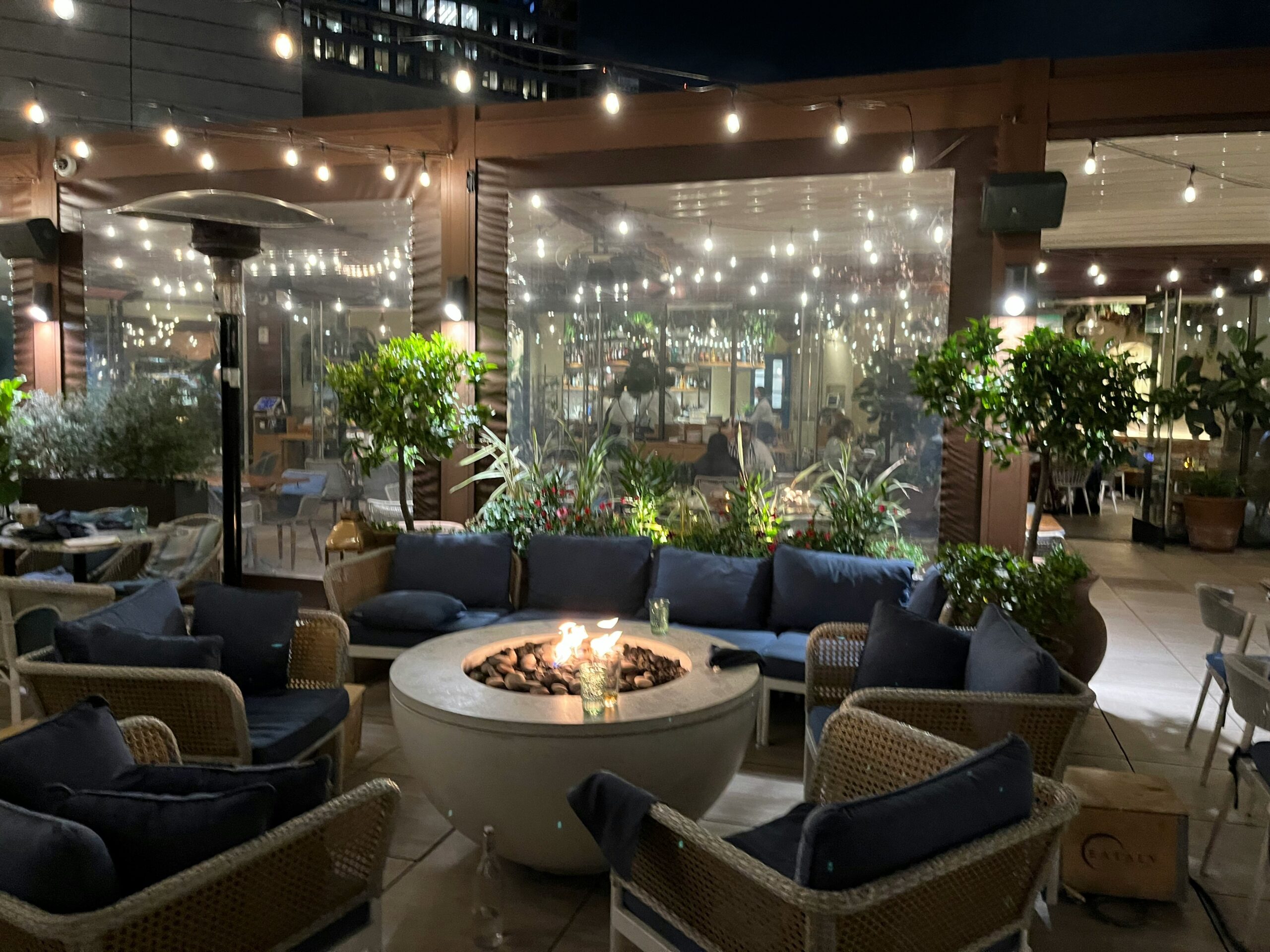As Valentine’s Day approaches, love is in the air, and what better way to celebrate than with a romantic dinner at one of Mumbai’s enchanting rooftop restaurants? From panoramic views of the city skyline to delectable cuisine served under the stars, these rooftop gems promise an unforgettable dining experience for you and your beloved. Let’s explore some of the most romantic rooftop restaurants in Mumbai that are perfect for celebrating love on Valentine’s Day.
Romantic Rooftop Restaurants in Mumbai for Your Valentine’s Day
1. Aer – Four Seasons Romantic Rooftop Restaurant in Mumbai
Perched atop the Four Seasons Hotel Mumbai, Aer offers a luxurious setting for a romantic evening. With its stunning views of the cityscape and a menu featuring gourmet delights, Aer sets the stage for a memorable Valentine’s Day dinner.
2. Dome – InterContinental Marine Drive Romantic Rooftop Restaurant in Mumbai
Dome, located at the InterContinental Marine Drive, is renowned for its breathtaking views of the Arabian Sea. Enjoy a candlelit dinner under the open sky as you indulge in a culinary journey of flavors from around the world.
3. Asilo – The St. Regis Mumbai Romantic Rooftop Restaurant in Mumbai
Nestled on the 40th floor of The St. Regis Mumbai, Asilo boasts panoramic vistas of the city skyline and the sea beyond. With its chic ambiance and innovative cocktails, Asilo offers the perfect backdrop for a romantic rendezvous.
Must Read: Best Chole Bhature in Mumbai: Savor the Authentic Flavors of Punjab’s Favorite Dish
4. AER – Worli Romantic Rooftop Restaurant in Mumbai
Situated on the 34th floor of the Four Seasons Hotel Mumbai in Worli, AER is another rooftop oasis offering spellbinding views of the city. Savor contemporary European cuisine amidst a sophisticated setting as you toast to love and romance.
5. The Marina Upper Deck – Marine Lines Romantic Rooftop Restaurant in Mumbai
Overlooking the iconic Marine Drive promenade, The Marina Upper Deck offers a charming setting for a romantic dinner. Enjoy the gentle sea breeze and the twinkling lights of the city as you dine on delectable seafood specialties.
6. Bayview – Hotel Marine Plaza Romantic Rooftop Restaurant in Mumbai
Perched atop Hotel Marine Plaza, Bayview is a hidden gem offering panoramic views of the Arabian Sea. With its intimate ambiance and sumptuous seafood fare, Bayview is the perfect spot for a romantic Valentine’s Day dinner.
7. Koyla – Colaba Romantic Rooftop Restaurant in Mumbai
Nestled in the heart of Colaba, Koyla is famous for its rustic charm and stunning views of the Arabian Sea. Dine under the stars on delicious North Indian cuisine as you soak in the romantic ambiance of this rooftop eatery.
8. Aer – Andheri Romantic Rooftop Restaurant in Mumbai
Located at the Four Seasons Hotel in Andheri, Aer offers a sophisticated setting for a memorable Valentine’s Day dinner. With its chic decor and panoramic views of the city, Aer promises an unforgettable dining experience.
9. AKA – Lower Parel Romantic Rooftop Restaurant in Mumbai
Perched atop the Peninsula Business Park in Lower Parel, AKA offers a trendy rooftop setting for a romantic dinner. Enjoy innovative cocktails and fusion cuisine as you take in the vibrant energy of Mumbai’s bustling skyline.
Must Read: Top 20 Mouth-Watering Best Street Food of India – Sinful and Tempting
10. Sora – Malad Romantic Rooftop Restaurant in Mumbai
Sora, located in Malad, offers a tranquil escape from the hustle and bustle of the city below. With its Japanese-inspired decor and stunning views of the suburbs, Sora provides the perfect backdrop for a romantic Valentine’s Day dinner.
Top 10 FAQs About Romantic Rooftop Restaurants in Mumbai for Valentine’s Day Dinner:
What is the ambiance like at rooftop restaurants in Mumbai?
Rooftop restaurants in Mumbai offer a romantic ambiance with panoramic views of the city skyline or the Arabian Sea.
Are rooftop restaurants in Mumbai suitable for Valentine’s Day celebrations?
Yes, rooftop restaurants in Mumbai are perfect for Valentine’s Day celebrations, offering a romantic setting for couples to dine under the stars.
What type of cuisine is typically served at rooftop restaurants in Mumbai?
Rooftop restaurants in Mumbai offer a diverse range of cuisines, including Indian, European, Asian, and fusion cuisine.
Do rooftop restaurants in Mumbai require reservations for Valentine’s Day dinner?
It is recommended to make reservations in advance, especially for Valentine’s Day dinner, to secure a table at your preferred rooftop restaurant.
What is the average cost of dining at rooftop restaurants in Mumbai?
The cost of dining at rooftop restaurants in Mumbai varies depending on the restaurant and the menu. It is advisable to check the prices beforehand.
Are rooftop restaurants in Mumbai suitable for special occasions like proposals or anniversaries?
Yes, rooftop restaurants in Mumbai are popular choices for special occasions like proposals, anniversaries, and romantic dinners.
Do rooftop restaurants in Mumbai offer vegetarian options?
Yes, most rooftop restaurants in Mumbai offer a variety of vegetarian options on their menu to cater to different dietary preferences.
Is there parking available at rooftop restaurants in Mumbai?
Some rooftop restaurants in Mumbai may offer valet parking services, while others may have nearby parking facilities available.
Are rooftop restaurants in Mumbai child-friendly?
While rooftop restaurants in Mumbai are primarily geared towards couples and adults, some may welcome families with children depending on the restaurant’s policy.
Do rooftop restaurants in Mumbai have dress codes?
Some rooftop restaurants in Mumbai may have a smart casual dress code, so it’s advisable to check the restaurant’s website or contact them directly for more information.
